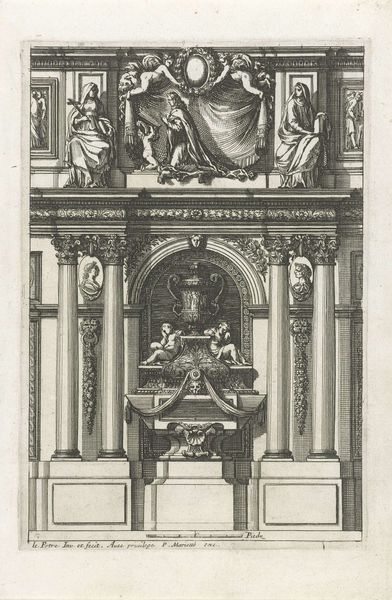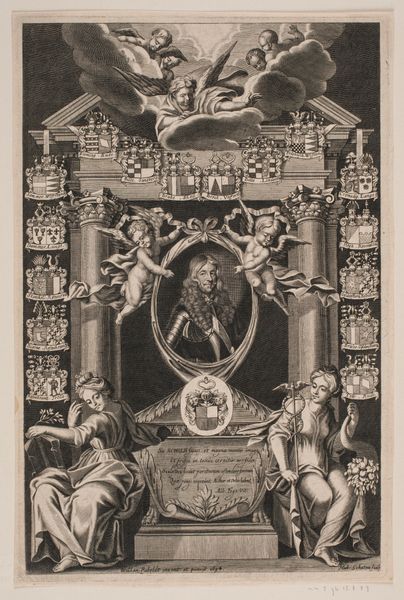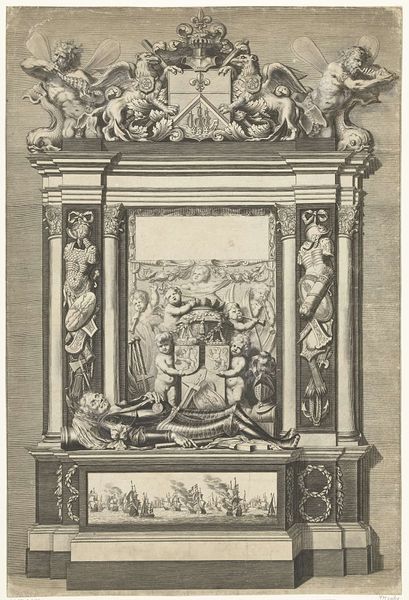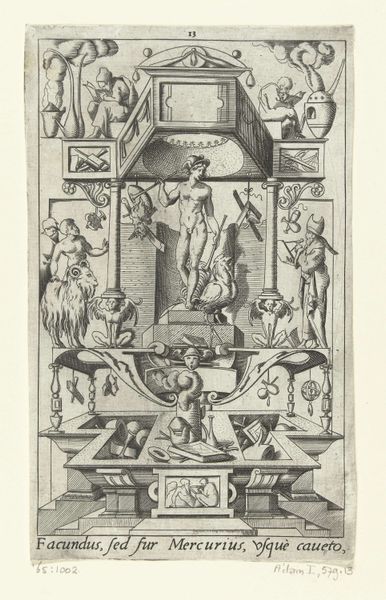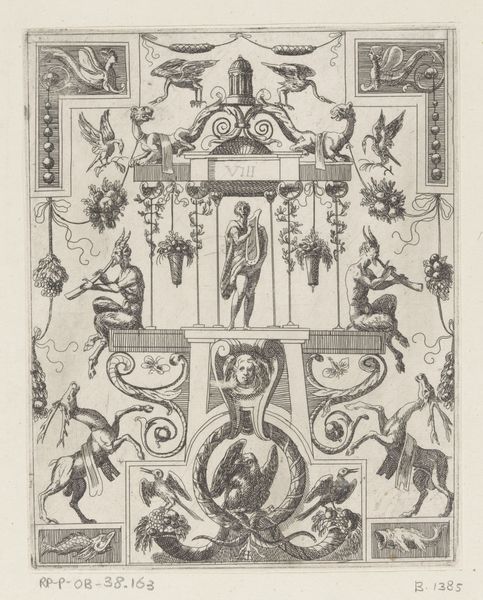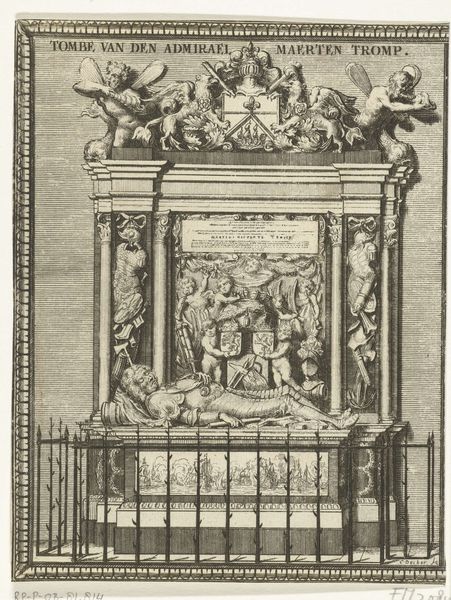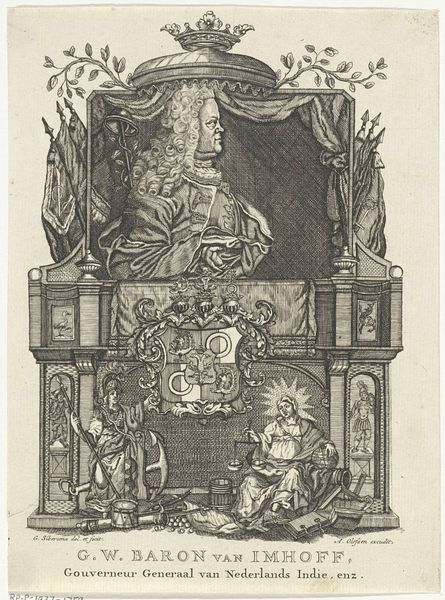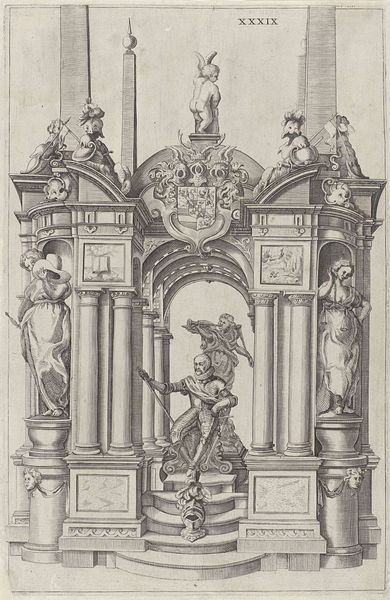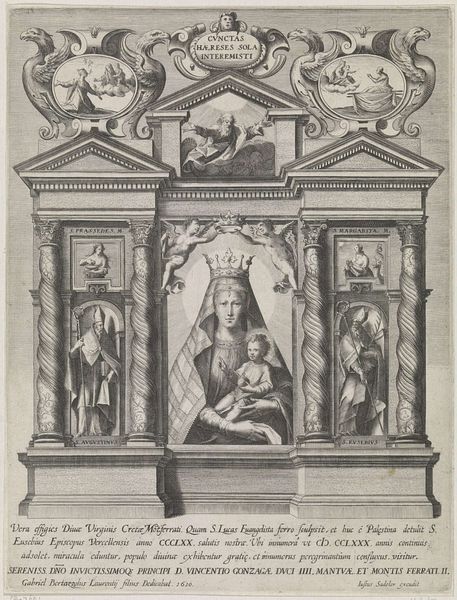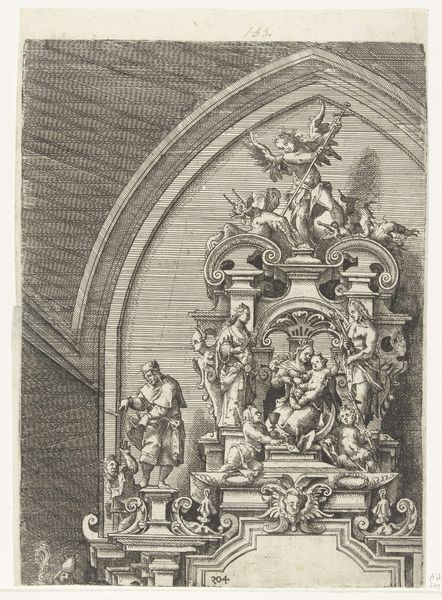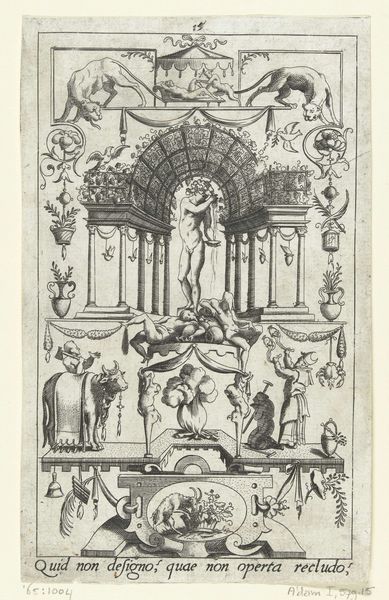
drawing, ink
#
drawing
#
allegory
#
narrative-art
#
pen drawing
#
figuration
#
11_renaissance
#
ink
#
line
#
history-painting
#
northern-renaissance
#
academic-art
Dimensions: height 495 mm, width 360 mm
Copyright: Rijks Museum: Open Domain
Editor: This is "The Staircase of Life," a pen and ink drawing by Cornelis Anthonisz., dating from between 1545 and 1553. The intricacy is astounding! It feels like a commentary on the different stages and societal roles of life... What can you tell me about the history behind such a complex allegorical image? Curator: Indeed, its complexity reflects the social and political currents of the Dutch Renaissance. Consider the role of printed images in disseminating ideas during the Reformation. How do you think this print might have functioned in that environment? Editor: Hmm, maybe as a moral guide, reminding people of their place in society and the fleeting nature of life? Curator: Precisely! "The Staircase of Life" serves as a memento mori, but also reinforces the existing social hierarchy. Notice how figures representing different professions – a scholar, a soldier, a merchant – are carefully positioned within the structure. This wasn't just about personal reflection, it was about reinforcing the social order. How do you see the architecture functioning within this visual rhetoric? Editor: The architecture almost literally "frames" these figures, lending them importance, but also, kind of boxing them in? Curator: An excellent point. The architecture elevates specific social roles and reinforces expectations surrounding them. Do you think this piece celebrates or critiques the social order? Editor: I'm seeing both now. There's a celebration of worldly achievement but the ever-present memento mori undertones makes the viewer aware that these figures all meet a grim fate. Curator: Yes, it encapsulates the tension between earthly ambition and spiritual awareness that characterized the era. These prints played a critical public role, fostering civic discourse through visual rhetoric. It really makes you consider the artist’s position within society. Editor: I hadn't thought about it that way before. I will definitely never look at drawings the same again.
Comments
No comments
Be the first to comment and join the conversation on the ultimate creative platform.
